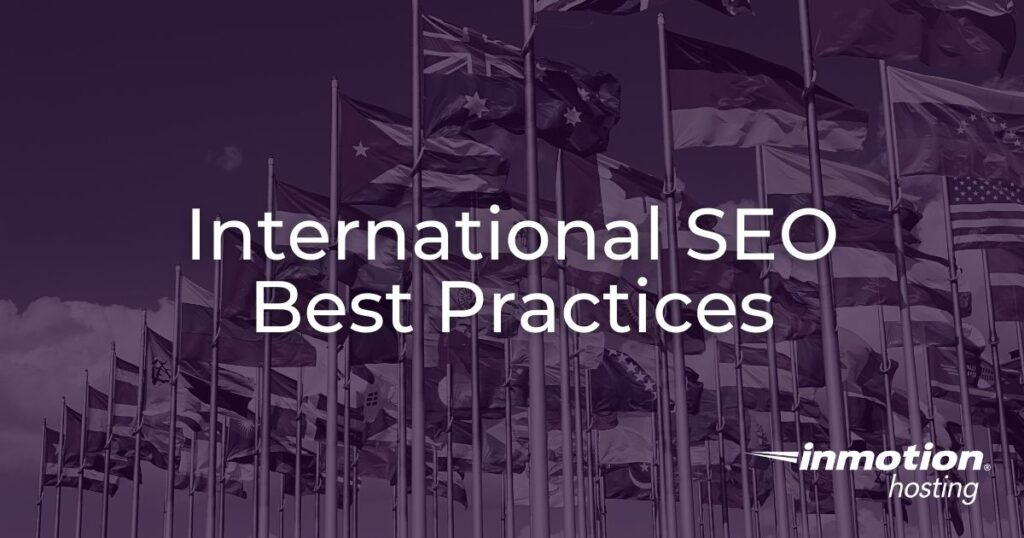
International SEO is the process of optimizing your website for different countries and languages.
It can improve your website’s organic presence in international markets and help you get your products, content, and services in front of a global audience.
In this article, we will introduce you to international SEO, explain its impact on your website, and outline some international SEO best practices to help you take your company global.
- What is International SEO?
- Why is International SEO Important?
- Types of International Websites
- International SEO Best Practices
What is International SEO?
International SEO is the process of optimizing your website so that Google and other search engines know precisely what countries you want to target and which languages are used for your business.
It incorporates many standard SEO best practices but focuses on targeting different audiences across diverse geographic regions.
The goal of international SEO is to create a better experience for all of your international visitors by making sure they see content that is relevant to them and in their native language.
Why is International SEO Important?
Not all websites need to be optimized for international audiences.
However, if you know that a decent amount of your visitors are coming from different countries, then international SEO can do a lot to improve your reach.
When it comes to SEO, one of the most important parts is being able to match user search intent. Google automatically interprets search intent and shows users the search results that align with their intent, with locality being built into those results.
If you are working with an international audience or customer base, your website can be much more effective when it is optimized for your users’ specific languages and the countries they come from.
Types of International Websites
When it comes to international websites, there are two primary kinds of websites: multilingual and multi-regional.
Let’s take a look at what differentiates the two types of websites:
- Multilingual: Any website that offers content in more than one language. As an example, we will use a Canadian business that has both English and French versions of its site. In this case, Google Search will attempt to find only pages that match the language of the searcher.
- Multi-regional: Any website that explicitly targets users in different countries. For example, say there is a product manufacturer that ships to both Mexico and the United States. For instances like this, Google Search will aim to find the right local page for the searcher.
Of note, It is possible for some sites to be both multi-regional and multilingual. An example of this could be a site that might have different versions for the USA and for Canada and both French and English versions of the Canadian content.
International SEO Best Practices
Now that you know what international SEO is and how it can impact your business, let’s take a look at some international SEO best practices.
URL Structure for International Sites
When it comes to using a website to target particular countries, there are a few different URL structures that webmasters can utilize to accomplish that goal.
Google suggests that you consider using a URL structure that makes it easy to geotarget your site, or parts of it, to different regions.
Here is a breakdown of the options available for using locale-specific URLs:
- ccTLD: Country-code top-level domain names are two-letter domains that are tied to a specific country and provide a strong signal to both users and search engines that your site is explicitly intended for a certain country. Example: yourbusiness.us, yourbusiness.uk
- gTLD: Generic top-level domains are three or more letter domains that tell search engines not to restrict results based on a region, but they may result in a loss of traffic because many sites prefer ccTLDs. Example: yourbusiness.com
- Subdomain: Subdomains can be used in order to combine aspects of ccTLDs and gTLDs. Doing this can offer you the advantage of using a country code as a gTLD. Example: uk.yourbusiness.com
- Subdirectory: Subdirectories can also be used to change the location of the country code. Example: yourbusiness.com/uk
- gTLG with language parameters: This option uses a general TLD, but is targeted at speakers of a specific language by utilizing a URL parameter. Example: yourbusiness.com/?lang=en-us
- Different domain: Using a different domain means that your international content will be placed on its own separate root domain from your non-international site. Example: yourbusinessussite.com
URLs are interpreted differently depending on which search engine you use, and each of the above URL structures comes with its own pros and cons. Before you decide on a URL structure, it’s worth taking a closer look at each to see which one is best for your needs.
Use Language-Targeting
Another way to optimize your website for international SEO is to language target your website.
You can do this by using a hreflang tag to show Google and other search engines which languages your website is designed to handle.
These HTML attributes tell Google which geographic area to serve a webpage to and what language that page should be served in.
For example, the following hreflang tag lets Google knows there’s an alternative page available in Italian, allowing Google to rank the correct page:
<link rel=”alternate” href=”http:/yourbusiness.com/it” hreflang=”it-it”/>
Translate Content Carefully
If you want to take international SEO seriously, try to avoid machine translations. While it may seem like a quick and easy option to translate a page, machine translations are still not accurate enough to live up to Google’s standards.
That means you will want to take the time to go through all the elements of your website to ensure they are translated correctly. While this obviously applies to your content, it also applies to things like time zones, currency, and contact info such as addresses and phone numbers.
When you make the effort to do this, you tell searchers that they are in the right place and increase the likelihood that they will have a positive experience on your site.
Give Users Options
The whole point of international SEO is to serve up content that matches local user expectations, but that is not to say you should automatically make that decision for your users.
While it might seem like a good idea to automatically redirect a user to a different language based on the location of their IP address, this can actually do more harm than good.
In fact, automatic redirections can actually prevent users (and search engines) from viewing all the versions of your site.
Not everyone speaks the same language that is associated with their location, so you should give your users the option to choose a different language version of a page instead of automatically redirecting them.
International SEO isn’t something that every business needs, but it can be beneficial for businesses with a large number of customers from another county or who speak another language.
If you know you have that type of market, then optimizing your site for your international customers can give you a boost in the global rankings.
Want to keep learning? Check out Image SEO: 11 Tips to Optimize Images for Search Engines.

Comments
It looks like this article doesn't have any comments yet - you can be the first. If you have any comments or questions, start the conversation!